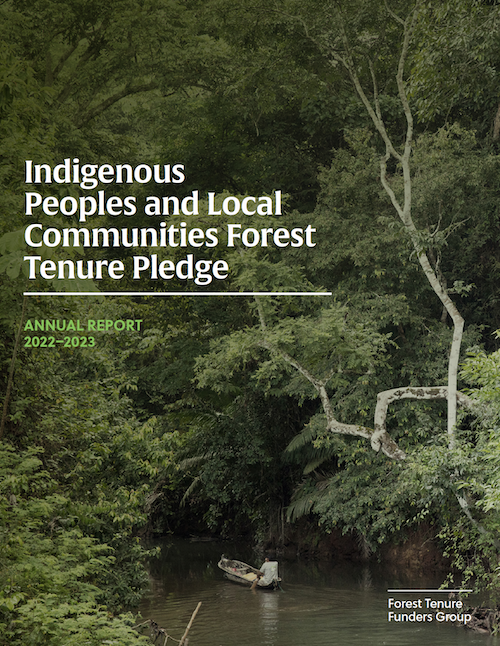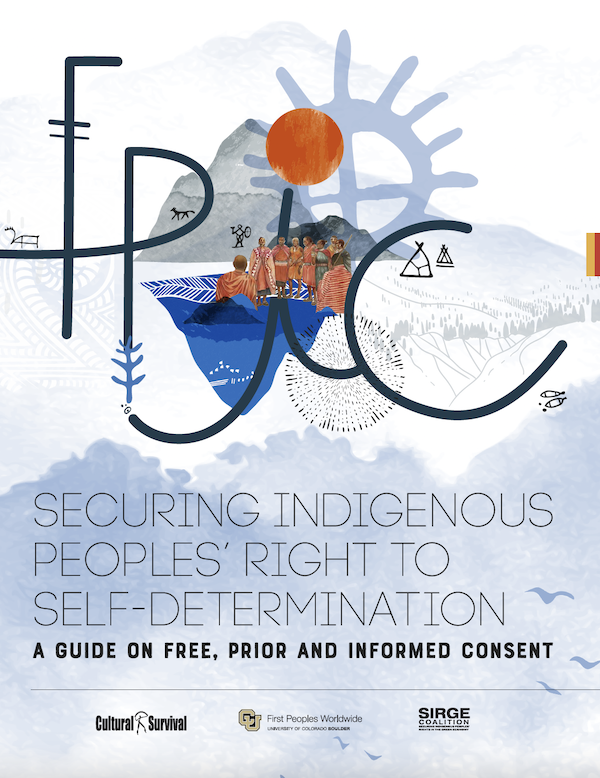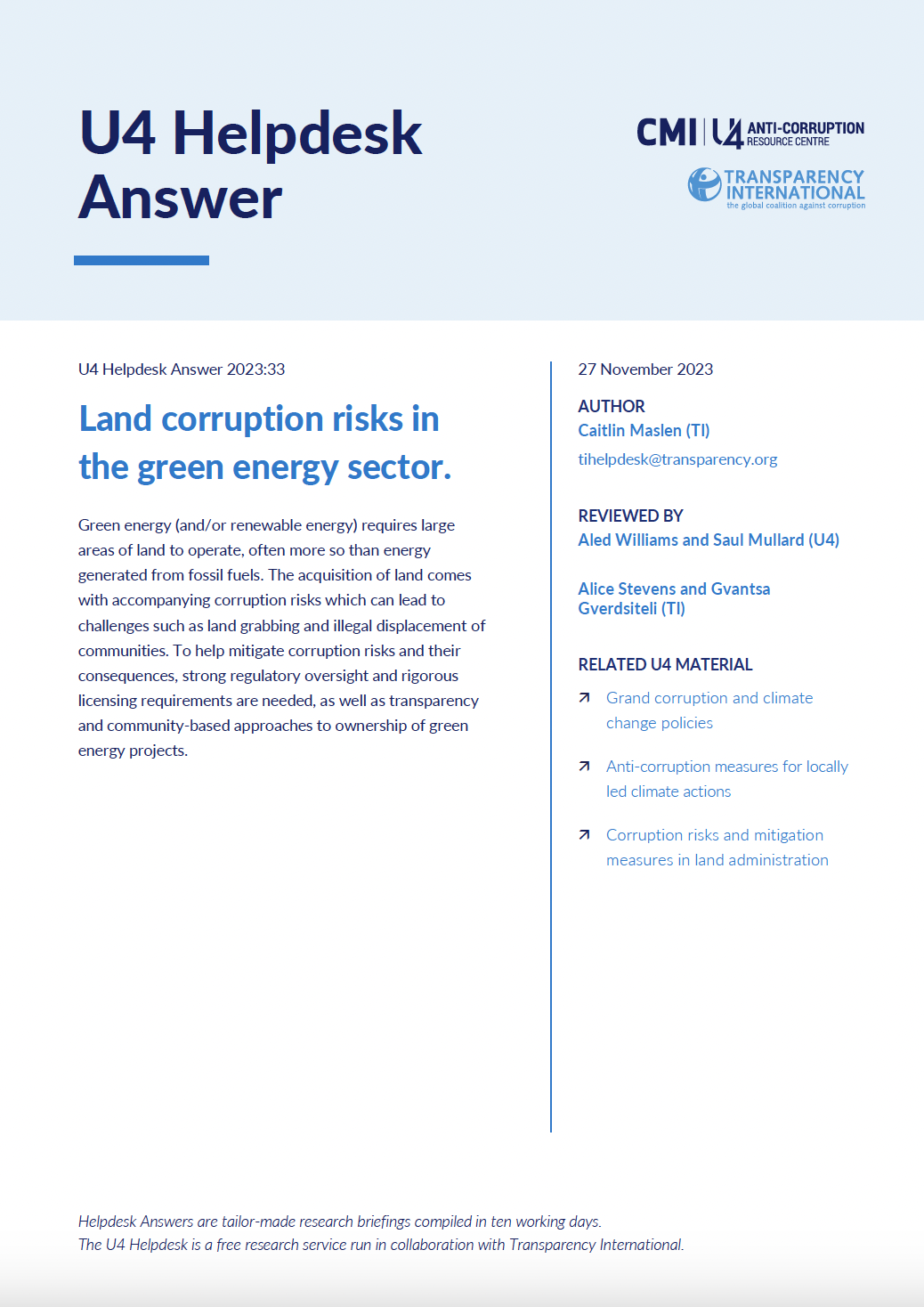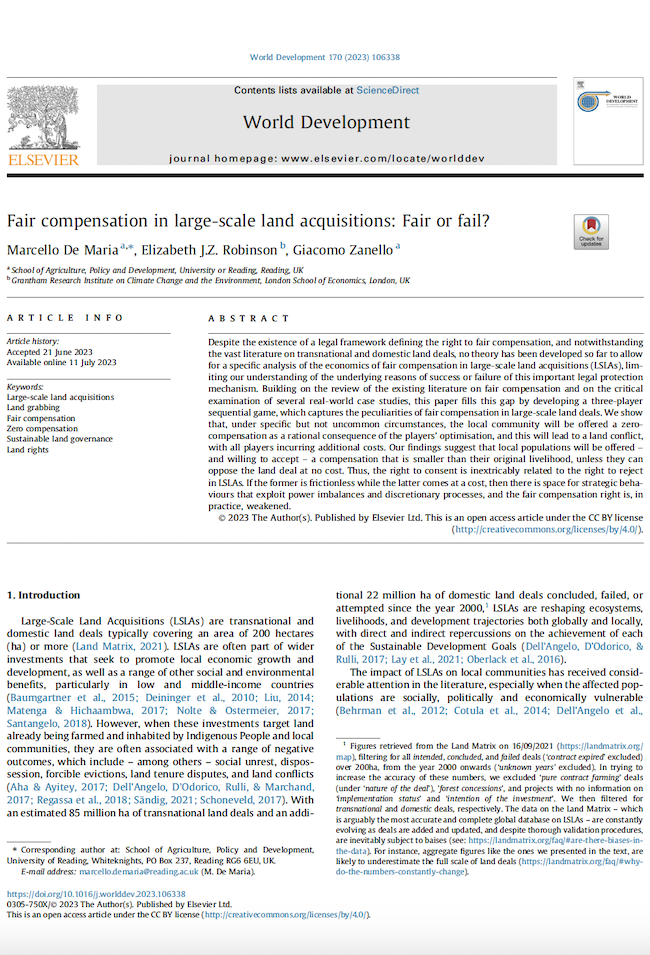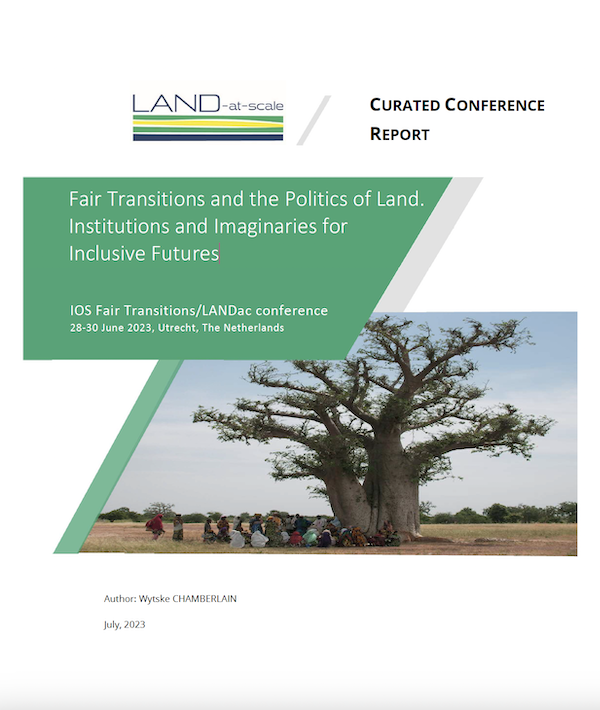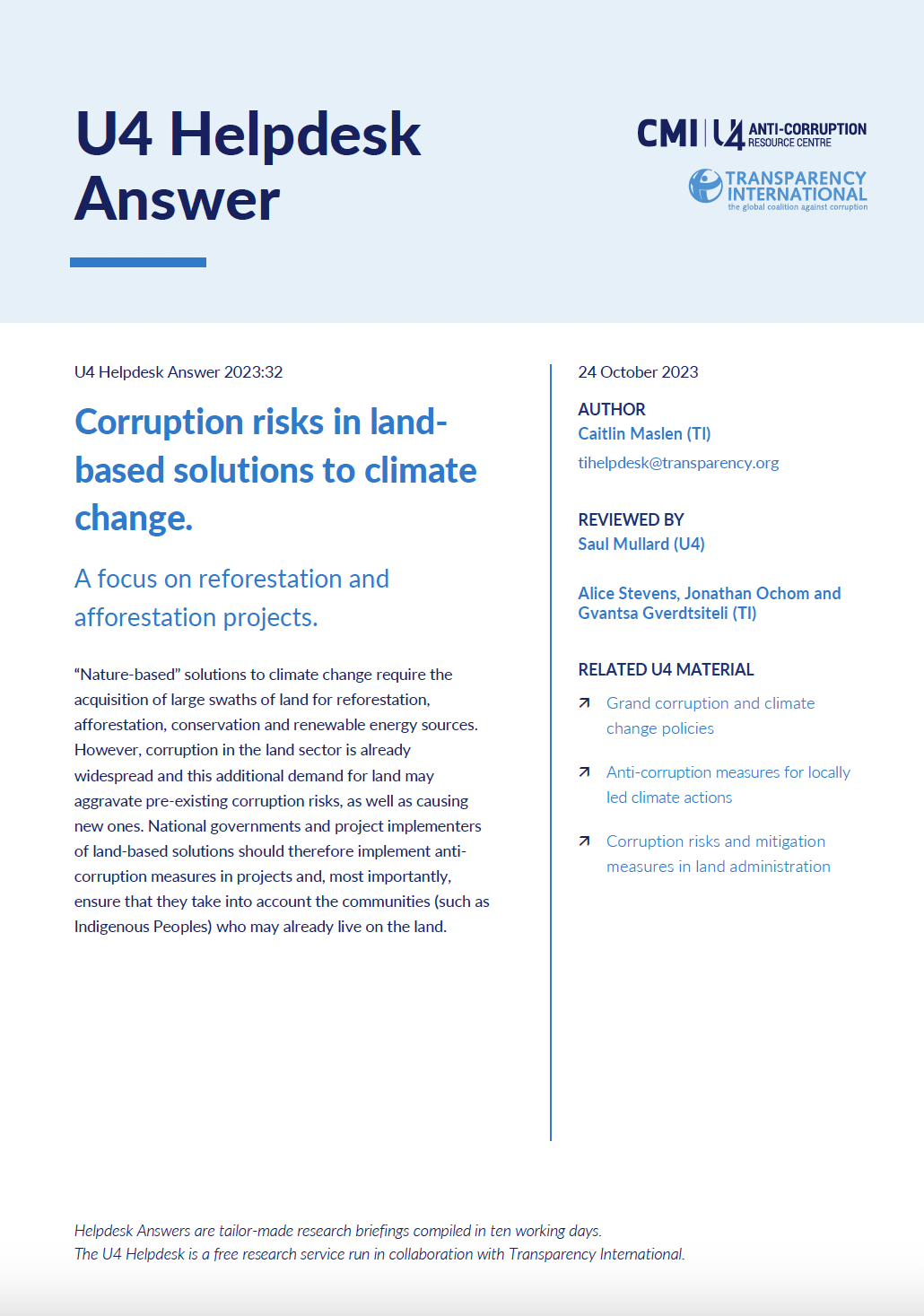This second <a href="https://landportal.org/iplc/forest-tenure-donor-pledge">Forest Tenure Funders Group </a>(FTFG) annual report analyzes progress against the five-year, $1.7 billion…
Este segundo informe anual del Grupo de Financiadores de laTenencia Forestal (FTFG) analiza el progreso en relación con el compromiso de cinco años y 1.700 millones de dólares para los derechos de tenencia y la tutela forestal de los Pueblos Indígenas y las comunidades locales (PI y CL) en…
Le deuxième rapport annuel du Groupe de bailleurs de fonds pour la tenure forestière (FTFG) analyse les progrès réalisés par rapport à l'engagement quinquennal de 1,7 milliard de dollars en faveur des droits fonciers et de la garde forestière des peuples autochtones et des communautés…
Este segundo relatório anual do Grupo de Fomento ao Manejo Florestal (FTFG) analisa o progresso em relação ao compromisso de cinco anos e US$ 1,7 bilhão com os direitos de posse e tutela florestal de povos indígenas e comunidades locais (PIs e LCs) em países de floresta tropical, anunciado na…
“Free, Prior and Informed Consent (FPIC) is the first line of defense when investors and government officials seek to develop projects that may affect Indigenous communities, lands, territories, and resources. For this reason, Indigenous Peoples must be prepared to engage with FPIC from a fully…
For over a century, energy multinationals have been wrecking the planet and exploiting people in pursuit of profit. Now, power producers and technology manufacturers are marketing themselves as ‘green’ to boost their reputation and benefit from public subsidies, grabbing lands, violating human…
Green energy (and/or renewable energy) requires large areas of land to operate, often more so than energy generated from fossil fuels. The acquisition of land comes with accompanying corruption risks which can lead to challenges such as land grabbing and illegal displacement of communities. To…
Despite the existence of a legal framework defining the right to fair compensation, and notwithstanding the vast literature on transnational and domestic land deals, no theory has been developed so far to allow for a specific analysis of the economics of fair compensation in large-scale land…
LAND-at-scale (LAS) is a land governance support program for developing countries from the Ministry of Foreign Affairs of the Netherlands, which was launched in 2019. The objective of the program is to directly strengthen essential land governance components for men, women and youth that have…
Questions about how land is governed and controlled in the context of multiple crises are key to debates about fair transitions. The energy transition, net-zero ambitions, nature protection, and food system transformation all involve claims on land, water, and forests. How these claims are…
Struggles to control valuable land, natural and mineral resources are at the heart of many conflicts around the world. Many have their roots in colonial conquest and post-colonial resource grabbing by colluding local and global elites. Land conflicts frequently entail clashes of values and…
“Nature-based” solutions to climate change require the acquisition of large swaths of land for reforestation, afforestation, conservation and renewable energy sources. However, corruption in the land sector is already widespread and this additional demand for land may aggravate pre-existing…

